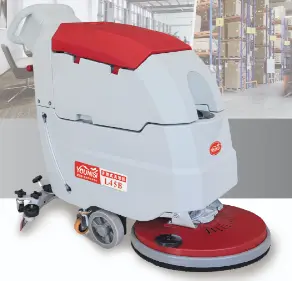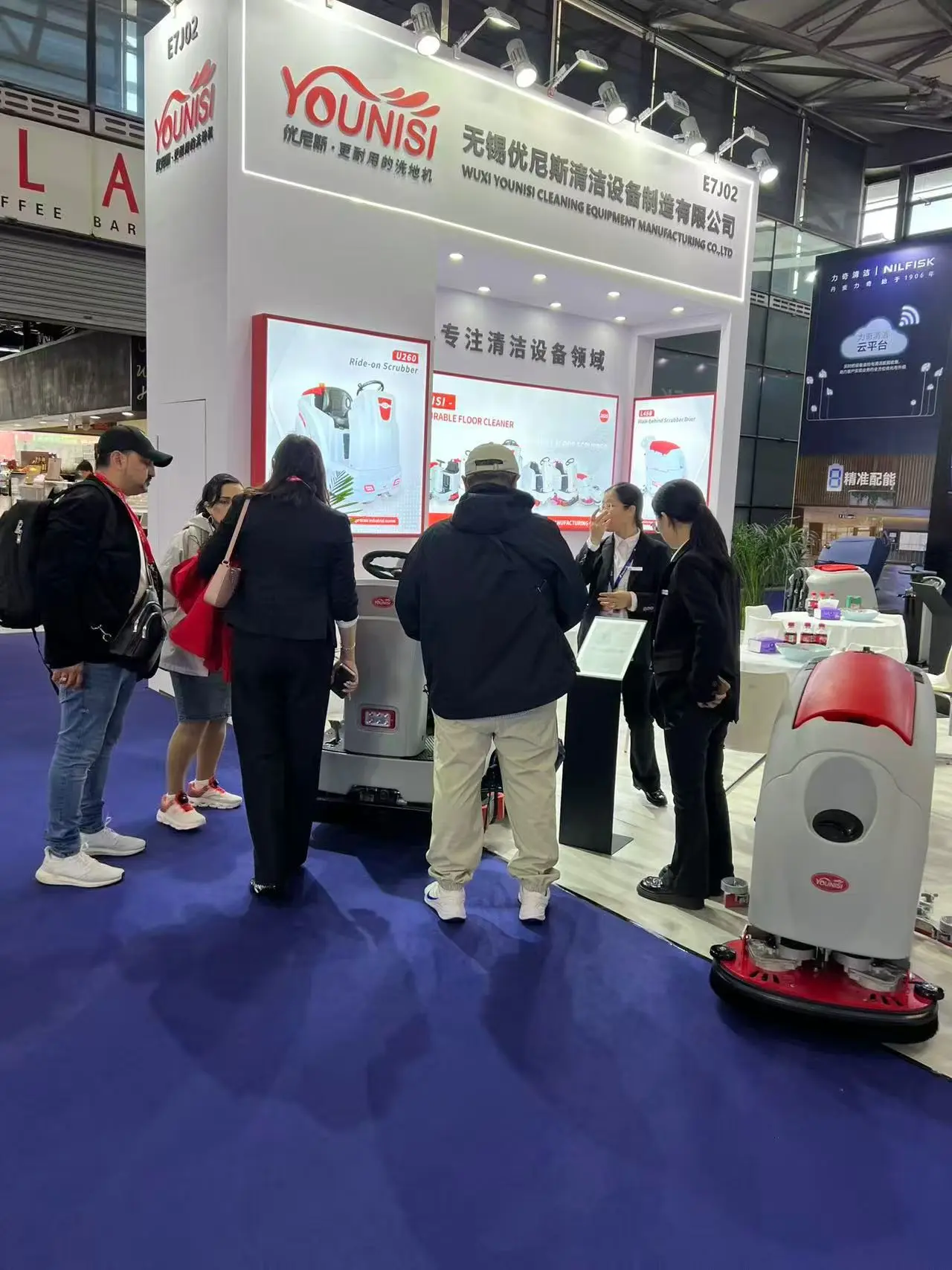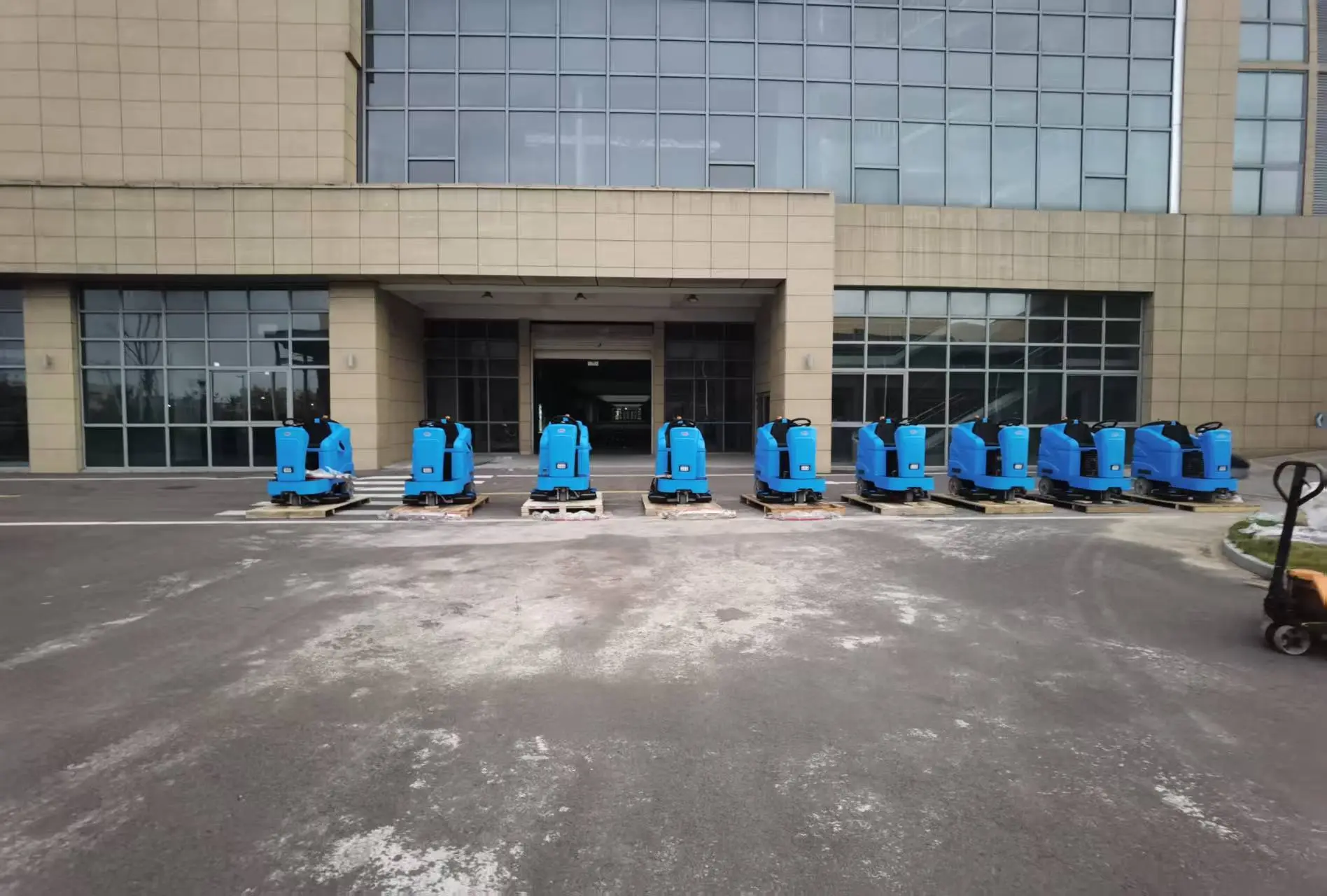How Does a Floor Scrubber Work?
Basic Working Principle of Floor Scrubbers
A floor scrubber is a high-efficiency floor cleaning device that integrates functions such as water spraying, floor scrubbing, and wastewater recovery into a single system, enabling rapid cleaning of hard surfaces. Modern floor scrubbers typically consist of a clean water tank, brush or pad, squeegee, wastewater tank, motor, and control system.
Workflow of a Floor Scrubber
Water Spraying: The scrubber first sprays clean water or cleaning solution from the clean water tank onto the floor.
Mechanical Scrubbing: A motor-driven brush or pad rotates at speeds typically between 150-300 RPM, physically scrubbing the floor to remove tough stains.
Wastewater Recovery: A squeegee located behind the brush uses vacuum suction to collect wastewater into the wastewater tank, ensuring quick drying and preventing recontamination.
Floor Drying: After the squeegee process, the floor usually dries quickly, significantly reducing the safety hazards associated with wet floors after traditional mopping.
Working Characteristics of Different Types of Floor Scrubbers
Walk-Behind Scrubbers: Suitable for small areas, easy to operate, and manually pushed.
Ride-on Scrubbers: Designed for large spaces, operators can drive the machine for higher cleaning efficiency.
Automatic Scrubbers: Equipped with smart sensors and navigation systems for autonomous cleaning.
Advantages of Floor Scrubbers
Compared to traditional mops, floor scrubbers improve efficiency by 5-10 times, save approximately 60% in water usage, and deliver more thorough cleaning results. We recommend Younisi floor scrubbers, tailored to meet your specific needs.



